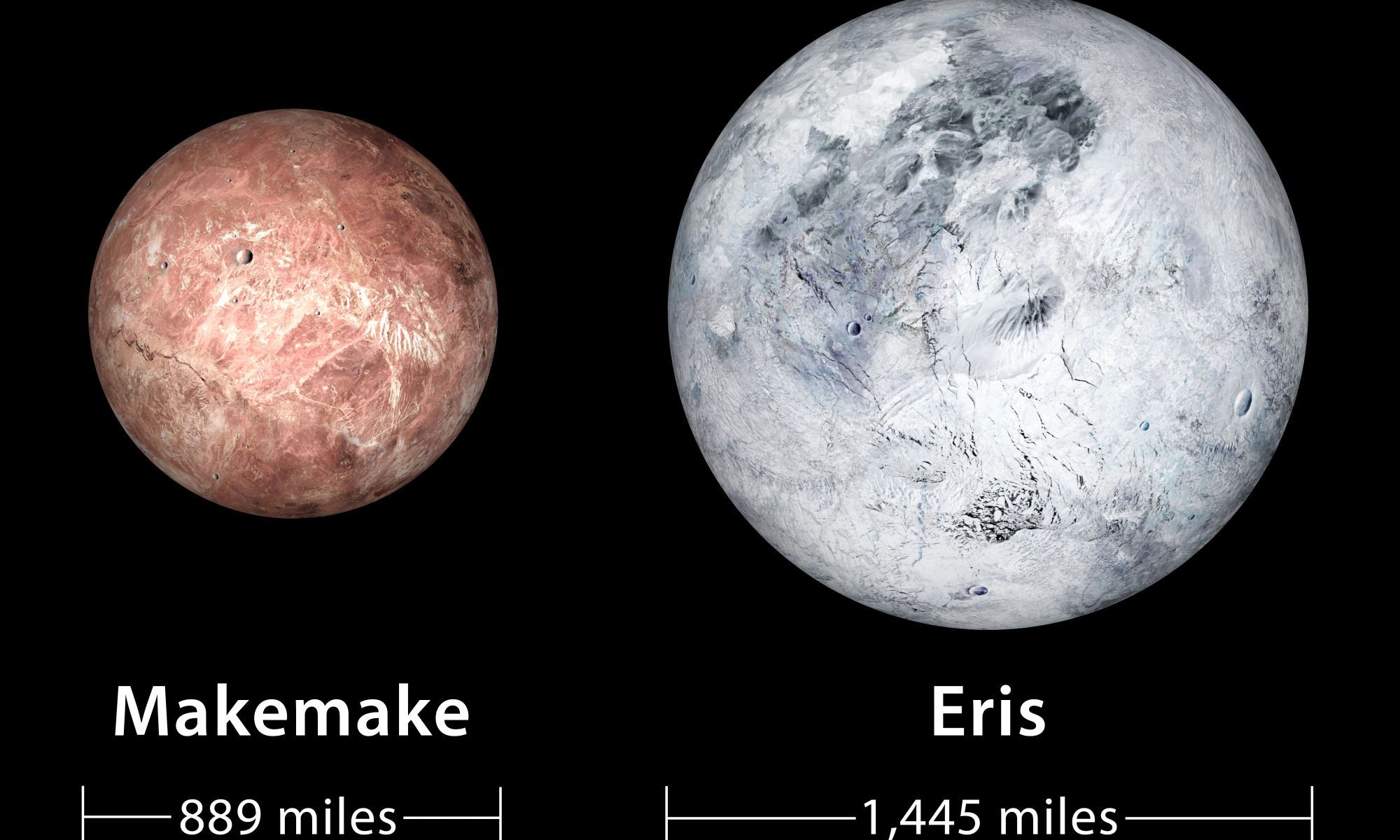Whether or not you agree that Pluto isn’t a planet, in many ways, Pluto is quite different from the classical planets. It’s smaller than the Moon, has an elliptical orbit that brings it closer to the Sun than Neptune at times, and is part of a collection of icy bodies on the edge of our solar system. It was also thought to be a cold dead world until the flyby of New Horizons proved otherwise. The plucky little spacecraft showed us that Pluto was geologically active, with a thin atmosphere and mountains that rise above icy plains. Geologically, Pluto is more similar to Earth than the Moon, a fact that has led some to reconsider Pluto’s designation as a dwarf planet.
Astronomers still aren’t sure how Pluto has remained geologically active. Perhaps the gravitational interactions with its moon Charon, or perhaps interior radioactive decay. But regardless of the cause, the general thought has been that Pluto is an exception, not a rule. Other outer worlds of similar size and composition are likely dead worlds. But a new study shows that isn’t the case for at least two dwarf planets, Eris and Makemake.
This new study doesn’t rely on high-resolution images like we have for Pluto. Our current observations of Eris and Makemake show them only as small, blurry dots. But we do have spectral observations of these worlds, which is where this study comes in.
The team looked at the spectral lines of molecules on the surface of these worlds, most specifically that of methane. Methane, or CH4 has two important variants. One is composed of standard hydrogen atoms, while the other contains one or more atoms of a type of hydrogen known as deuterium. Deuterium has a nucleus containing a proton and neutron rather than just a proton, and this skews the spectrum of methane a bit. From the spectral observations, the team could measure the D/H ratio for methane on both worlds.

This ratio is determined by the source of the methane. If Eris and Makemake are dead worlds, then the methane they have stems from their origin more than 4 billion years ago, and the D/H level should be on the higher end. On the other hand, if the surface methane was generated through an interior process and vented through active geological processes, then the D/H ratio should be lower. The team found that the ratio is most consistent with thermogenic and abiotic mechanisms, suggesting that both Eris and Makemake are active worlds, or at least were active in geologically recent times.
Eris is about the same size as Pluto, so it isn’t too surprising that it’s a geologically active world given what we now know about Pluto. But Makemake is much smaller, about 60% the size of Pluto. If Makemake is an active world, then it is likely that other dwarf planets such as Haumea are as well. If that’s the case, then most if not all dwarf planets are geologically active. As the authors suggest, it might be worth sending a probe or two to the outer worlds for more study.
Reference: Glein, Christopher R., et al. “Moderate D/H ratios in methane ice on Eris and Makemake as evidence of hydrothermal or metamorphic processes in their interiors: Geochemical analysis.” Icarus (2024): 115999.


Pluto, Makemake, and Eris are all planets. Pluto is estimated to be 70% rock, so it is hardly an icy body. Eris, being slightly more dense, could be even more rocky. All three may harbor subsurface oceans that could host microbial life. We need to return to Pluto with an orbiter and send flyby missions to Makemake and Eris.
Makemake is 1,400 km across, larger than other potentially geologically active dwarf planets such as Ceres. “Although Ceres likely lacks an internal ocean of liquid water, brines still flow through the outer mantle and reach the surface, allowing cryovolcanoes such as Ahuna Mons to form roughly every fifty million years. This makes Ceres the closest known cryovolcanically active body to the Sun, and the brines provide a potential habitat for microbial life.”
@laurele: I know I am not writing this for you so you may recognize and adopt the consensus, but I write this for innocent bystanders that can be unduly confused by your comments. Astronomers have agreed that our system have 8 known planets, hence theirs and the article designation of large, hydrostatically rounded bodies that are not certifiable astronomical planets “dwarf planets”.